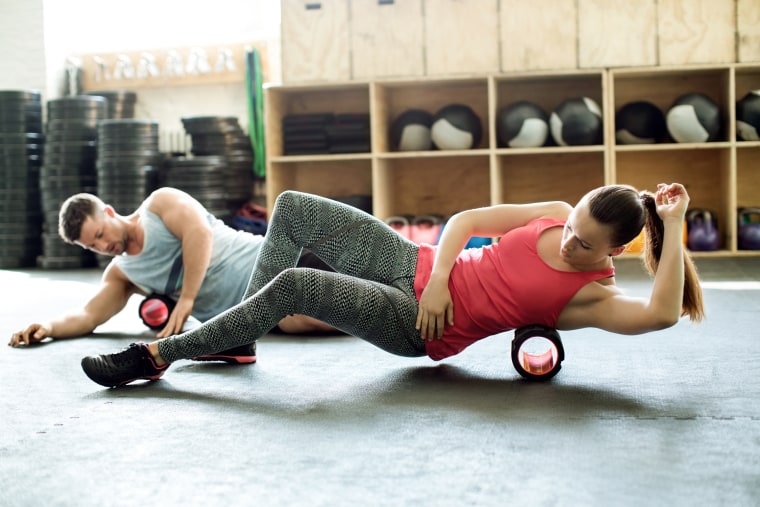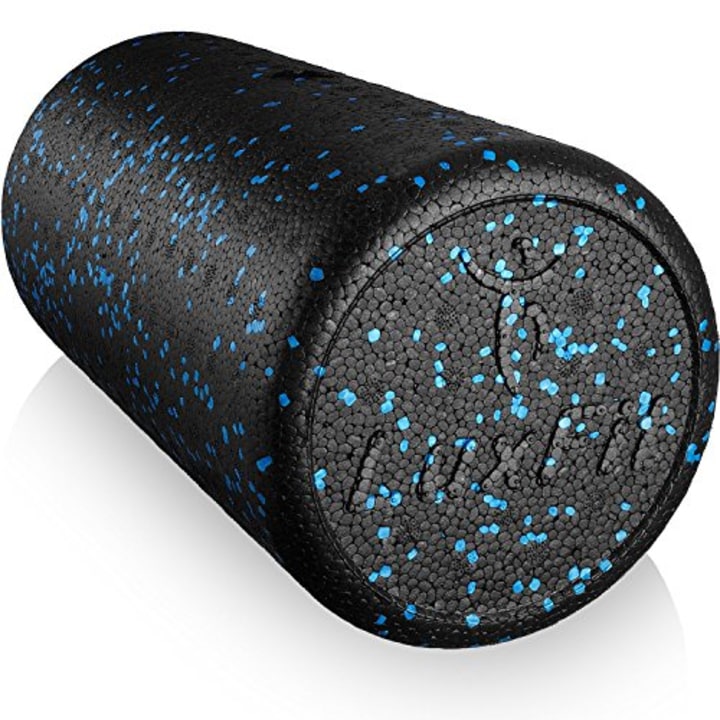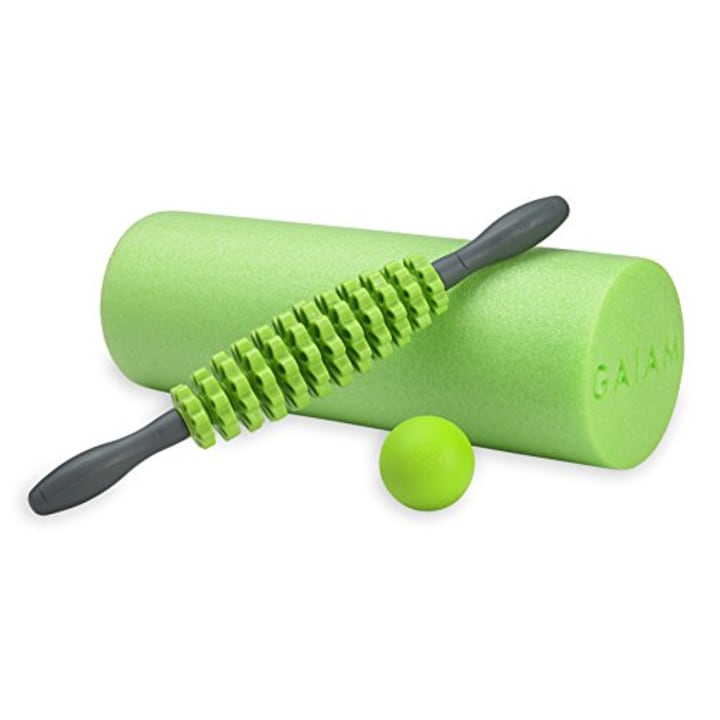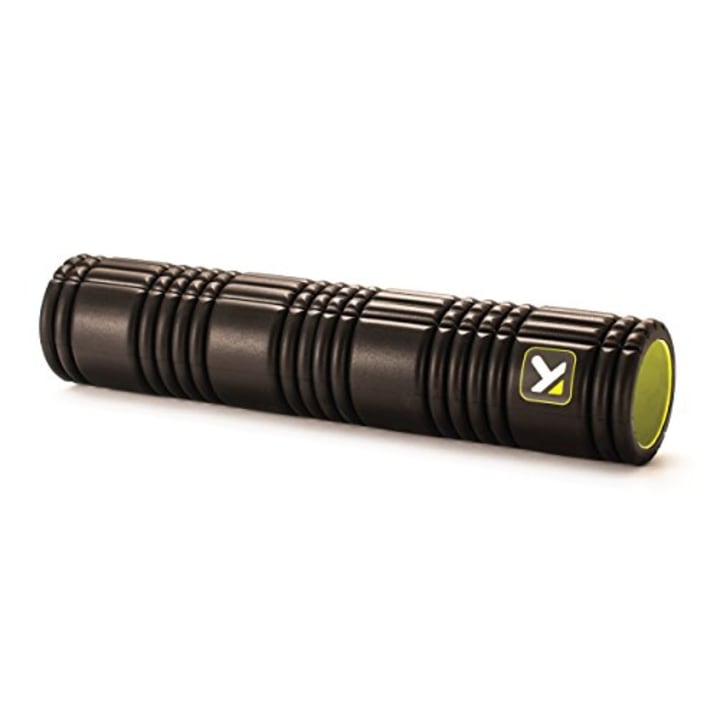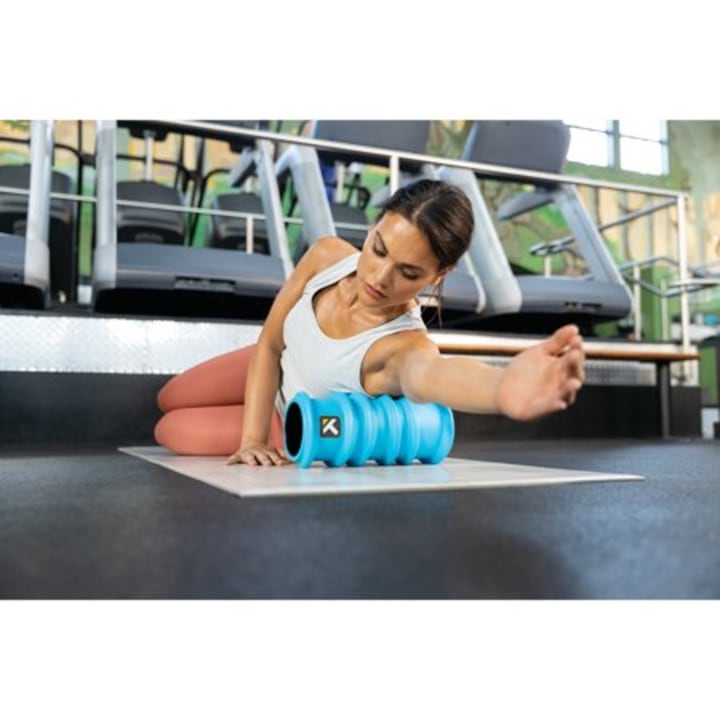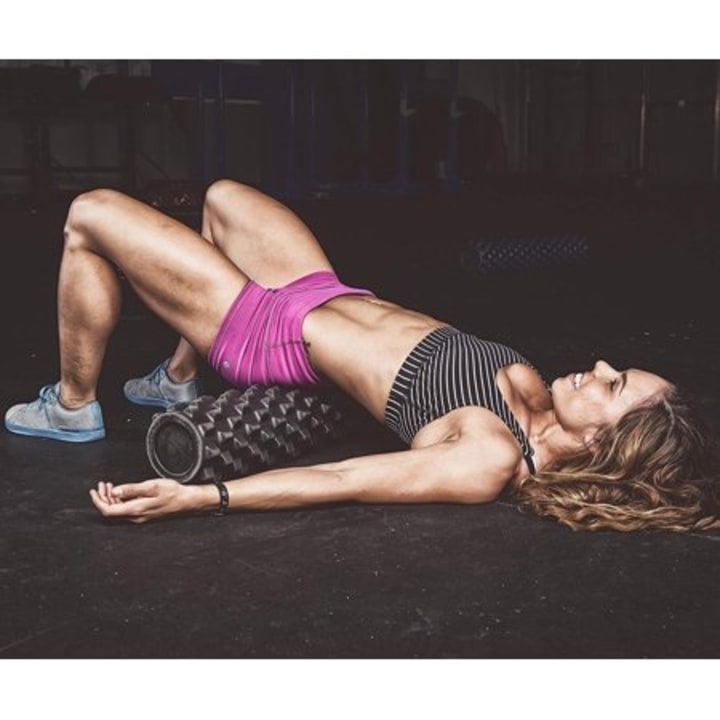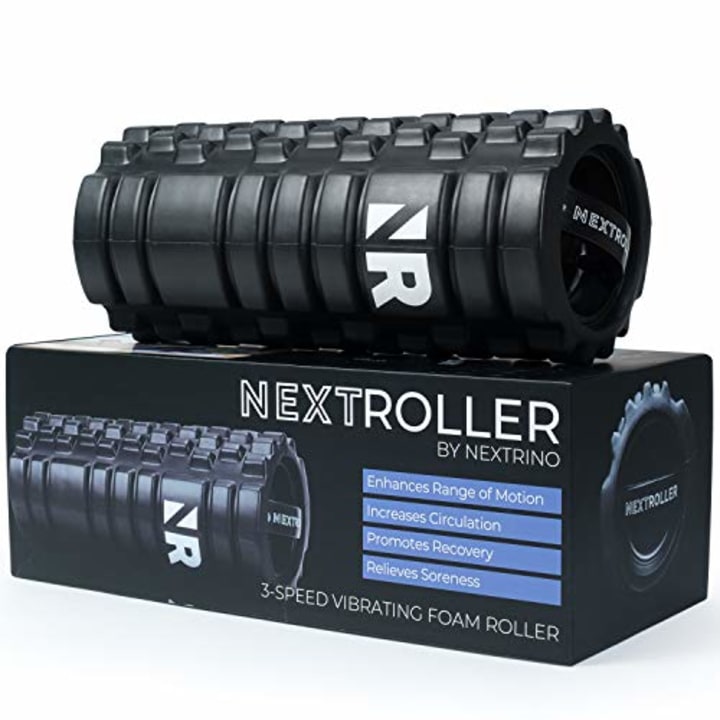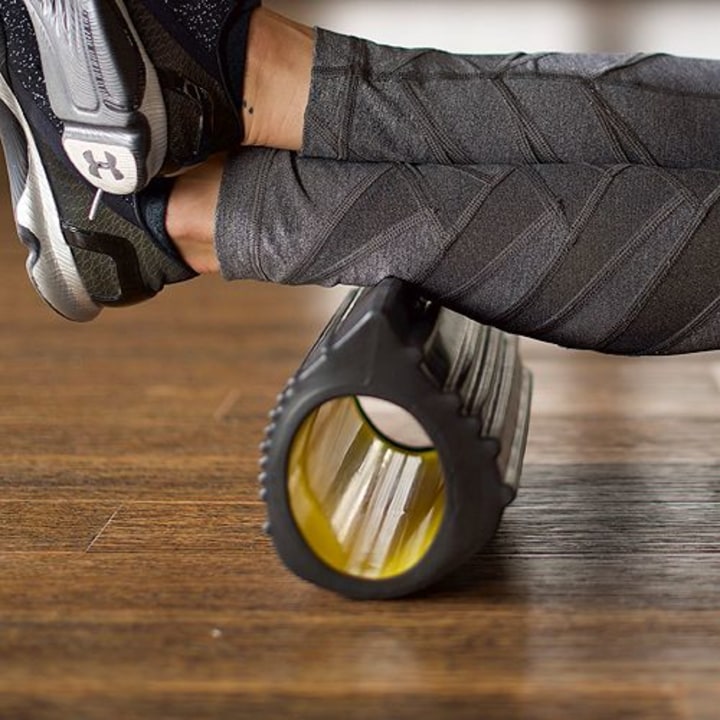Self-myofascial release has been gaining popularity over the years as a way to release tight muscles and improve mobility. There are even entire workout classes devoted to foam rolling — arguably the most popular main stream tactic of engaging in myofascial release.
Research has been conducted exploring how foam rolling affects range of motion of joints and if it helps reduce muscle soreness. And the results are promising. One study found that after only three consecutive days of foam rolling, muscle fatigue was reduced and range of motion was increased. So aside from feeling relief in the moment, it's possible that the benefits accumulate over time as well.
In this article
What are the benefits of foam rolling?
Dr. Karena Wu, physical therapist and owner of ActiveCare Physical Therapy in NYC and Mumbai, utilizes foam rolling exercises with her patients at the office and teaches them how to use the foam rollers at home. She explains that foam rolling is a self-massage to the soft tissues. “The foam roller compresses tissues and helps to release tight bands in soft tissue,” she says. “Massage is an 'irritant' to the soft tissues that brings blood flow, which then helps with fluid movement and promotes healing because blood carries nutrients and oxygen. So, getting this type of compressive massage therapy helps break up tightness or 'knots' in the tissues.”
“It also helps to promote fluid circulation, increases pliability of the soft tissues, reduces compressive forces on the joints (when the surrounding soft tissues are more flexible) and increases neuromuscular activity because the soft tissues will be more at an optimal resting length for function,” Dr. Wu adds.
I’ve encouraged my clients to foam roll on their own at the gym as part of their post-workout stretch and recovery routine, and they’re shocked by how good it feels (and how painful it can be on more tender spots, like the IT band.) Whether you dedicate time before or after each workout, attend a weekly foam rolling class, or roll it out in your living room, consistency will help you achieve more mobility, less pain and better muscle function.
But if you’re new to foam rolling, what body parts should you focus on?
How to use a foam roller
A few of the areas that Wu encourages her clients to foam roll are the glutes, quads and backs of the shoulders. She recommends doing foam rolling for at least 10-20 minutes, especially if you’re covering the large areas of the lower legs and working the tissues out.
Susane Pata, a Crunch group fitness instructor and senior master instructor for TriggerPoint, agrees that the quads and thoracic spine are big targets for foam rolling. “People should foam roll like they floss their teeth — daily. But if not, as often as possible,” she says.
Pata says that her classes last an hour for a total body roll, and recommends longer sessions like this after a workout. “If you are foam rolling before a workout (really a good idea so as to get better mobility) I’d keep it short — 5 to 10 minutes —and then do a proper movement warm up,” she says.
Paula Lester, who teaches a class called Pilates Mat, Roll and Release at Privé-Swiss Fitness, integrates foam rolling into a classical Pilates mat class to help relieve tight muscles and stress. She focuses on similar areas (the mid-back, outer thigh and quads) — since they are large areas, they can feel immediate relief after foam roller use. Lester recommends about 20 minutes of foam rolling. “You should spend a couple of minutes on each muscle group focusing mostly on the tighter more tender areas,” she explains. She suggests staying still (and not rolling) on the tight areas to give the roller a chance to dig into these knots and break them up rather than just rolling back and forth. “The increase of blood flow and the pressure from the foam roller helps to release the tight muscles and ease pain," she says.
Foam roller exercises that target different muscle groups
Sit all day? This one’s for you!
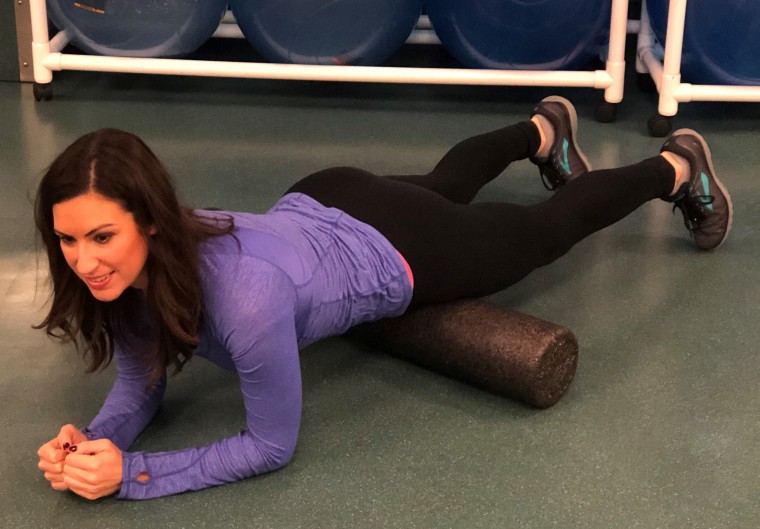
If you’re in a seated position for much of the day, your hip flexors can become shortened over time. Therefore, stretching the front of your hips, specifically these hip flexors, and massaging the muscles and tissue around them can help combat the effects of sitting all day.
Runner? Work on that IT Band
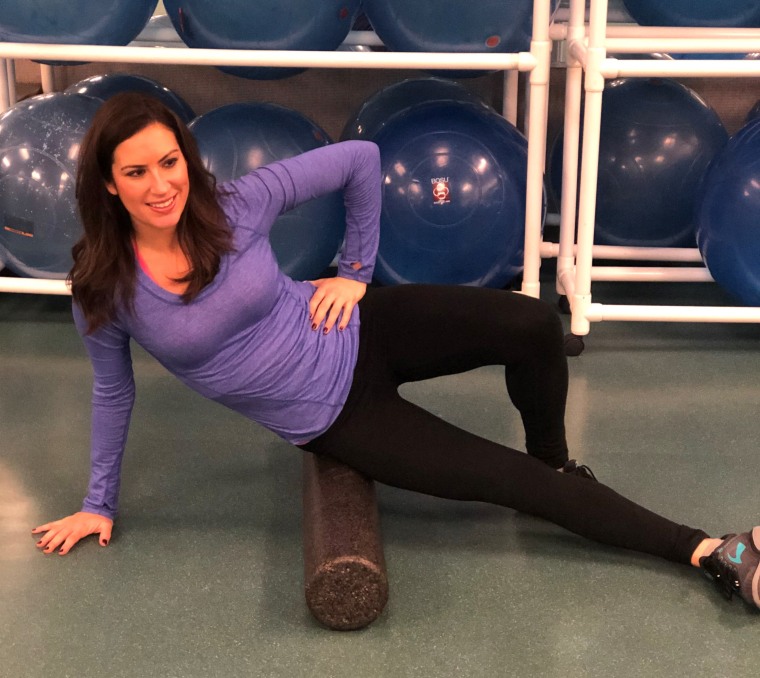
Time to foam roll the outer hip and thigh. It can be challenging to stretch the Iliotibial Band (IT Band), and frequently it becomes tighter the more active you are with the lower body and repetitive motions like running. Lester agrees: "This move targets the long bank of muscles on the outer thigh which can create a lot of tightness contributing to back and knee pain. It decreases the amount of stress put on the hips and knees and increases mobility."
Poor posture? Roll it out
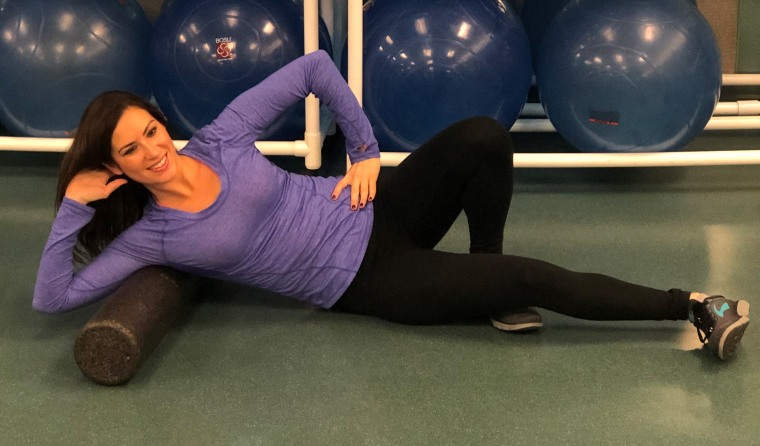
Time to foam roll the upper side of your body. You can strengthen your back all week long and stretch your chest, too. But if the sides of your chest and back are tight, it may be difficult to maintain good posture. Try foam rolling the armpits, outsides of the chest, and the sides of the upper back to loosen up and promote better posture.
Sore backside? Fix it now
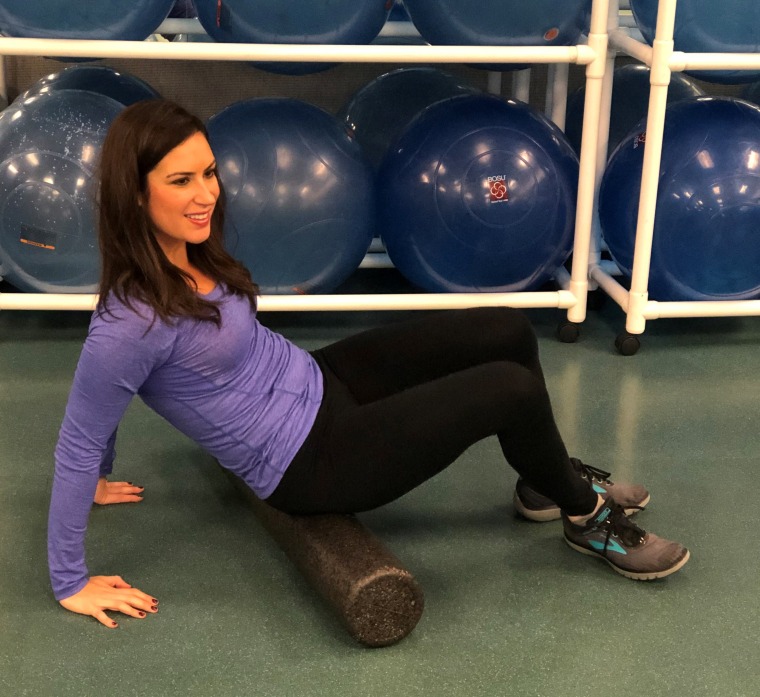
Foam rolling your glutes can help relieve tension in your low back by loosening up the muscles connecting to your low spine.
Tight Neck? Loosen up
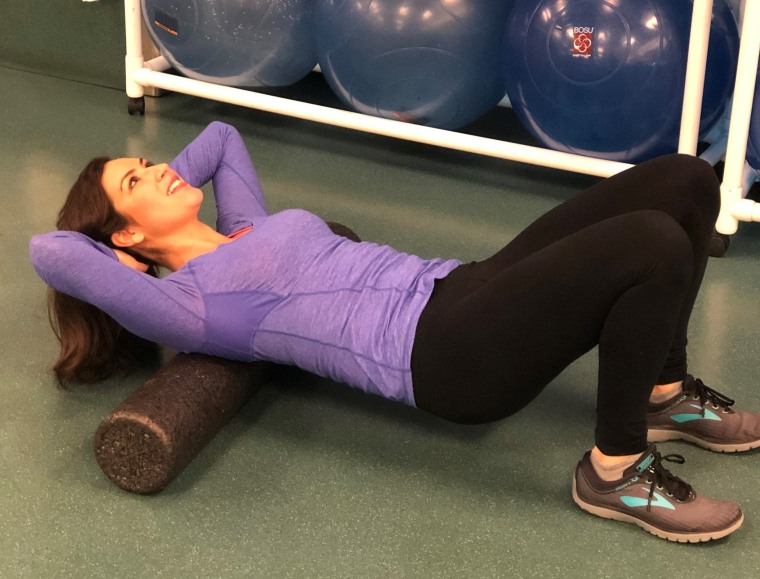
To foam roll your upper back, lie down on the foam roller and massage your upper back and neck slowly and gently. You can move side to side or just lie back with your hands behind your head and roll up and down your upper back.
Sore knees and hips? Alleviate pain
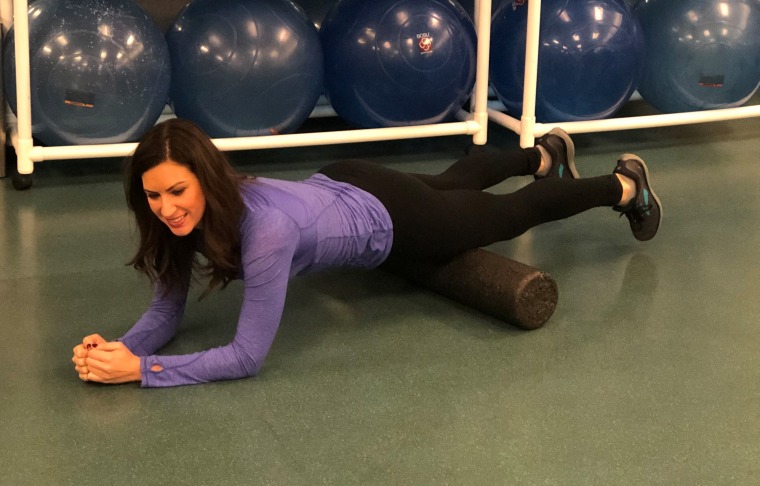
Time to foam roll your quads. "Most of us are quadricep dominant, which leads to tightening of this large set of muscles. This dominance can cause kyphotic posture and tight hip flexors," Lester explains. "Rolling the quads can prevent stress on the knees and tightness in the hips helping to better your posture." To perform this move, lie down with the foam roller underneath you, and roll the tops of your legs up and down on the roller.
Foam rollers at every price point
If you're convinced you need to start incorporating foam rolling into your at-home workout routine, here are options at every prince point:
1. LuxFit Foam Roller
This $10 version is simple and inexpensive. It's great for beginners or people looking for the basics.
2. 321 STRONG Foam Roller
The grooves in this roller are great for targeting trigger points and deep muscle tissue that’s been chronically tight.
3. Gaiam Bundle Kit
This includes a basic foam roller, an adjustable rolling stick and a massage ball to get even deeper into the muscles and hit specific trigger points.
4. TriggerPoint GRID Foam Roller
This roller is unlike traditional foam rollers in that the distinctive, multi-dimensional surface of the GRID replicates the feeling of a massage therapist’s hands.
5. TriggerPoint CHARGE Ridged Foam Roller
Ridges and nubs make the foam rolling more intense because they dig in to the muscles. Be cautious with them if you’re new to foam rolling!
6. RumbleRoller - Textured Muscle Foam Roller
This textured edition of a nubbed foam roller will be the most intense of the bunch and hurt the most (in a good way!)
7. NextRoller 3-Speed Vibrating Foam Roller
This vibrating foam roller is designed to offer a massage around the impacted area and not just pressure on the spot that the foam roller touches.
8. TRX Rocker Myofascial Foam Roller
TRX's myofacial tool is more than just a foam roller. It offers something more like actual physical therapy than a “feel good” massage you'd get from the typical foam roller. It is best for specific areas like your shoulders or IT band, helping to break up the deep layers of fascia and offer your muscles long-term relief.
More Gear to Keep You Healthy
- Create your own at-home gym with these products under $20
- 10 kitchen gadgets that help you lose weight
- 15 gadgets and gifts that will take your fitness routine to the next level
- The best lunch boxes for adults, according to nutritionists
Want more tips like these? NBC News BETTER is obsessed with finding easier, healthier and smarter ways to live. Sign up for our newsletter and follow us on Facebook, Twitter and Instagram.
